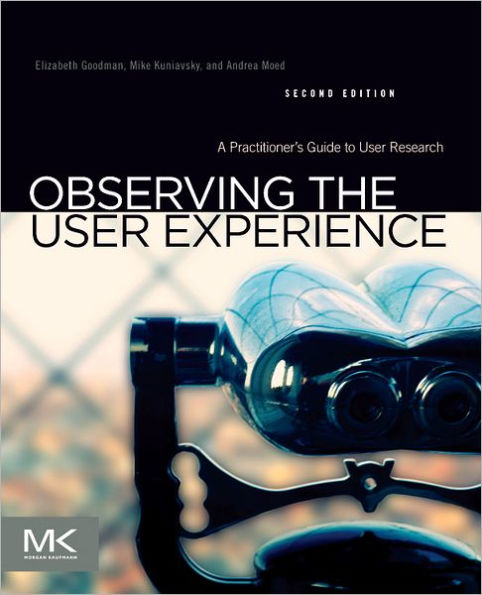"In this second edition, the authors update an important contribution to the emerging discipline of user experience (UX) research…This book is one of many noteworthy titles from Morgan Kaufmann in this subject area. It is chock full of practical examples and advice for both novice and experienced practitioners." —ComputingReviews.com, January 2013
"Anyone even remotely interested in involving participants and observing their reaction and interaction with the product in order to enhance the overall user acceptance should deeply benefit from this book. I very much liked the practical examples, tables, and diagrams which have given this book a more vibrant feel and allowed the reader to feel like he can use this textbook directly in the practice of establishing some user experience tests. I think the textbook is profoundly informational and was a joy to read." —Software Engineering News, March 2012
"You'll like Mike Kuniavsky's broad selection of practical user research methods—presented clearly and usably. And you'll like his timing too: while recent books focus on the whys of user experience, many are now ready for the hows. Observing the User Experience does just that: It demonstrates how to discover what is in users' heads, and suggests how we might balance those considerations with business objectives." —Lou Rosenfeld, co-author of Information Architecture for the World Wide Web
"Wow! So many of the user experience research methods we have refined and used over the years are now organized and described in detail in one book. It is an essential reference for any practitioner." —Christian Rohrer, Manager, User Experience Research, Yahoo!
"Observing the User Experience provides the reader with a wealth of information. We now have a guideline that can be used to gain insight into those mysterious figures...our users. Knowing who our users are, what they need, and how they might use the things we build for them is the most important part of any product development cycle. Mike Kuniavsky's focus in this book is on the user experience as it relates to online interfaces, but ANYONE who builds ANYTHING can gain valuable knowledge from reading this book." —David Hoffer, Senior User Interface Designer, CTB/McGraw-Hill
"I love Observing the User Experience! This comprehensive guide approaches user experience research like never before, and is well-written, easy-to-read, and quite user friendly. It provides a real-world example of how research is done in just enough detail that it can both inform a CEO of the role of usability research as well as introduce methodology to someone starting out in the field. Bravo!"—Kelly Braun, Usability Manager, Ebay
"Mike Kuniavsky offers many practical procedures to conduct and analyze the results of your own custom usability tests. He shares lots of personal stories from the trenches, many of which are painfully ironic. The hope is that his knowledge will help spare you the pain of making the same mistakes others have made before you." —from the foreword by Lynda Weinman, Author and Founder, lynda.com, Inc.
"Kuniavsky presents information logically, often anticipating potential questions by providing extensive explanations. His text is readable and easily understandable. He incorporates interesting quotes from various scholars, keeping readers' interest by breaking up the strict presentation of information. The overall layout and conversational tone make the text an enjoyable read and useful reference." —Kalle Medhurst - Technical Communications
"The best general how-to handbook on user research remains Mike Kuniavsky's Observing the User Experience. For the reader who wants to integrate contextual design into a fast-paced development cycle, but isn't sure how, this book will be a godsend. Even when their advice can't be followed to the letter, the book, like the authors method, can be adapted to your needs." —Networker Magazine
"Mike Kuniavsky's Observing the User Experience: A Practitioner's Guide to User Research is a welcome addition to the half dozen essential books on my cubicle shelf. This book provides lucid, personable, experienced advice that could only come from a seasoned consultant who has seen the good, bad, and ugly of web and application design. Its purpose is to give a solid foundation to any design team in the crucial beginning stages of a project by answer the questions: How do we go about learning who our users are an what they really need? And how do we do this in a way that helps us make a strong case for our design decisions to the people in charge?" —Andrew Hinton







